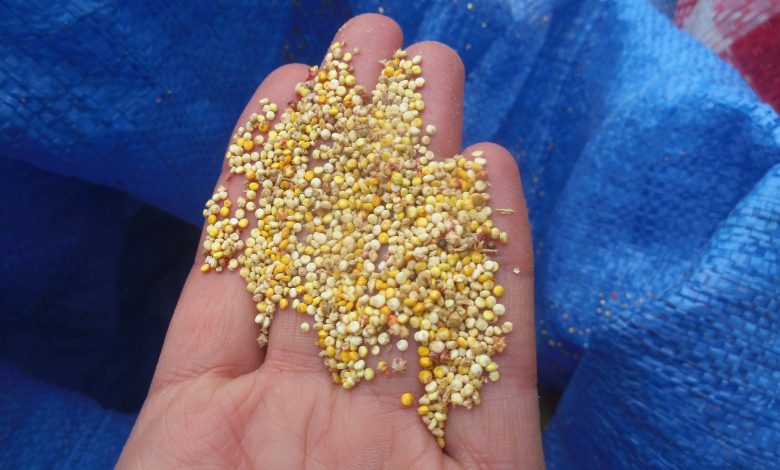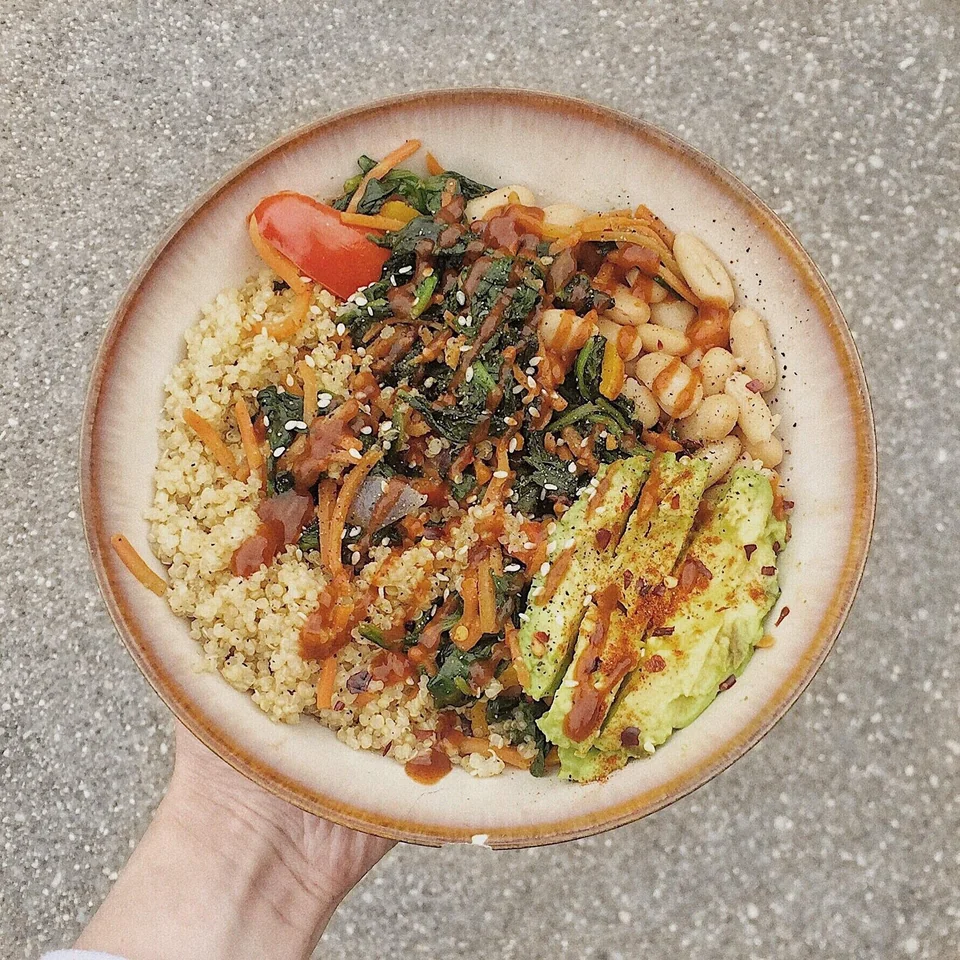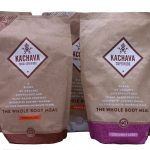Quinoa: Recipes, Medicinal Benefits, How to Cook it, Side Effects

What is Quinoa?
Quinoa (Chenopodium quinoa) is a highly nutritious grain-like crop that has gained popularity worldwide for its numerous health benefits. It is native to the Andean region of South America and has been an essential food source for the indigenous people of Bolivia, Peru, Ecuador, and Colombia for thousands of years.
Quinoa has a long history that dates back over 7,000 years. It was domesticated by the indigenous people of the Andean region, particularly by the Inca civilization. The Incas considered quinoa a sacred crop, often referring to it as the “Mother Grain” or the “Gold of the Incas.”
It was grown in the high-altitude regions of the Andes, where other crops struggled to survive due to the harsh climatic conditions. Its ability to thrive in these challenging environments made it a crucial staple in the Andean diet, providing essential nutrients and sustaining local communities.
When the Spanish conquistadors arrived in South America in the 16th century, they suppressed the cultivation of quinoa and other indigenous crops. The Spaniards considered quinoa to be a pagan food and replaced it with crops like wheat and barley. This led to a decline in quinoa cultivation among the indigenous population. Despite its decline during the colonial era, quinoa persisted in the Andean region. In the late 20th century, the nutritional value of quinoa and its adaptability to different climates attracted the attention of researchers and health-conscious consumers worldwide. Quinoa’s high protein content, essential amino acids, and gluten-free nature made it a valuable addition to modern diets, especially for those with dietary restrictions and health concerns.
In the 1990s, quinoa began to gain popularity in North America, Europe, and other parts of the world. The demand for this nutritious grain increased exponentially, leading to a surge in its production in the Andean countries. Today, quinoa is cultivated not only in the Andean region but also in various countries with suitable climates, such as the United States, Canada, Europe, and some parts of Asia. Its cultivation has contributed to the economic well-being of farmers in these regions, while also providing a nutritious and sustainable food source for people globally.
Quinoa’s rich history and versatility have made it a significant food crop that continues to be celebrated for its nutritional benefits and potential in addressing global food security challenges. Quinoa is not only a nutritious food but also offers several potential medicinal benefits due to its unique composition of vitamins, minerals, antioxidants, and bioactive compounds. While more research is needed to fully understand and validate these effects in humans, we will discuss some potential recipes, medicinal benefits, and side effects associated with quinoa in this article.
Medicinal Benefits Of Quinoa
Quinoa has several medicinal and health benefits that can include:
Rich Source of Nutrients
Quinoa is a nutritional powerhouse, offering a range of health benefits due to its impressive nutrient composition. As a complete protein source, quinoa contains all nine essential amino acids required for various physiological functions, making it an excellent choice for vegetarians, vegans, and those seeking alternative protein options. Additionally, quinoa is rich in dietary fiber, which supports digestive health by promoting regular bowel movements and aiding in weight management through increased satiety. The grain’s abundance of B-vitamins, such as folate, thiamin, and riboflavin, play vital roles in energy metabolism and red blood cell formation. Moreover, quinoa’s significant content of vitamin E and other antioxidants helps combat oxidative stress and reduce the risk of chronic diseases.
Quinoa is also a valuable source of essential minerals like magnesium, iron, potassium, and zinc. Magnesium supports nerve function, muscle contractions, and bone health, while iron contributes to the production of hemoglobin for oxygen transport and sustained energy levels. Potassium maintains fluid balance, nerve impulses, and heart health, and zinc is involved in immune function and wound healing. This impressive combination of nutrients contributes to overall nutritional well-being, supporting various bodily functions and promoting a healthy lifestyle. With its gluten-free nature and adaptability in various culinary dishes, quinoa has gained global popularity as a nutritious grain that offers more than just sustenance—it nourishes the body from within.
Antioxidant Properties
Quinoa’s antioxidant properties are attributed to its rich content of various bioactive compounds, such as flavonoids, quercetin, and kaempferol. These antioxidants play a crucial role in combating oxidative stress, a condition caused by an imbalance between free radicals and the body’s ability to neutralize them. Free radicals are unstable molecules that can damage cells and DNA, leading to various health issues and contributing to the development of chronic diseases.
By scavenging free radicals, quinoa’s antioxidants help protect cells from damage and reduce the risk of chronic conditions, including heart disease, cancer, and diabetes. Heart disease is often associated with oxidative stress, and antioxidants help prevent the oxidation of cholesterol, reducing the risk of atherosclerosis and promoting heart health.
Moreover, quercetin and kaempferol have been studied for their potential cancer-fighting properties. These flavonoids may help inhibit the growth of cancer cells and induce apoptosis (programmed cell death) in cancer cells, which is essential in preventing cancer progression.
Additionally, quinoa’s antioxidants contribute to diabetes prevention and management. Oxidative stress is known to play a role in insulin resistance and impaired glucose metabolism. By reducing oxidative stress, quinoa’s antioxidants can help improve insulin sensitivity and blood sugar regulation.
Incorporating quinoa into the diet can be a beneficial strategy to enhance antioxidant intake and combat oxidative stress, ultimately contributing to a lower risk of chronic diseases and improved overall health. It’s essential to consume a balanced diet rich in a variety of antioxidant-rich foods to fully harness their health-promoting effects.
Heart Health
Quinoa offers valuable contributions to heart health, making it an excellent addition to a heart-healthy diet. Its fiber content plays a pivotal role in reducing the risk of heart disease. By binding to cholesterol in the digestive tract, dietary fiber helps to lower LDL cholesterol levels, preventing the buildup of plaque in arteries and reducing the risk of atherosclerosis. This beneficial effect on cholesterol levels can promote better heart health and lower the risk of cardiovascular issues. Additionally, fiber supports overall digestive health, which indirectly contributes to heart well-being by maintaining a healthy gut environment and supporting the body’s nutrient absorption.
Furthermore, quinoa’s significant magnesium content provides additional heart-protective benefits. Magnesium is essential for maintaining healthy blood pressure levels by helping to relax blood vessels, promoting improved blood flow, and reducing strain on the heart. By supporting proper heart rhythm, magnesium may help prevent irregular heartbeats and other cardiovascular complications. Its role in maintaining optimal blood pressure is crucial, as hypertension is a significant risk factor for heart disease.
Incorporating quinoa into the diet as part of a heart-healthy eating plan, alongside other nutrient-dense foods, can be a smart strategy for cardiovascular well-being. However, it’s essential to remember that a heart-healthy lifestyle involves more than just individual dietary choices.
Digestive Health
Quinoa is an excellent grain for promoting digestive health, thanks to its fiber content and the presence of saponins. The abundant dietary fiber in quinoa aids in maintaining a healthy digestive system by preventing constipation and supporting regular bowel movements. As fiber adds bulk to the stool, it facilitates efficient waste elimination and helps keep the digestive tract functioning smoothly. This can alleviate discomfort and promote a comfortable, regular bowel movement pattern, ultimately supporting overall digestive well-being.
In addition to fiber, quinoa contains saponins, natural compounds with potential benefits for the digestive system. These saponins have shown anti-inflammatory and anti-bacterial properties in the gut, which can contribute to a healthier digestive environment. By reducing inflammation in the gastrointestinal tract and potentially inhibiting the growth of harmful bacteria, saponins may help protect the digestive system from damage and maintain a balanced gut flora.
Incorporating quinoa into one’s diet can be a beneficial step in promoting digestive health and overall well-being. As part of a balanced and diverse diet, quinoa’s fiber and saponin content can contribute to a healthy gut and smooth digestion.
Weight Management
Quinoa can be an effective aid in weight management due to its high protein and fiber content, making it a satisfying addition to a balanced diet. Protein is a vital nutrient known for its ability to promote feelings of fullness and reduce appetite. Quinoa’s status as a complete protein source means it provides all the essential amino acids the body needs, making it an ideal choice for those seeking alternative protein options or aiming to reduce their meat consumption. By including quinoa in meals, individuals may experience reduced hunger and cravings, leading to better portion control and a decreased likelihood of overeating.
The abundant dietary fiber in quinoa further enhances its potential for supporting weight management. Fiber absorbs water in the digestive system, expanding and creating a sense of fullness that can last longer after a meal. This increased satiety can help individuals stay satisfied between meals and reduce the urge to snack on calorie-dense or unhealthy foods. Additionally, the slow digestion of fiber-rich foods like quinoa helps stabilize blood sugar levels, preventing sudden spikes that may trigger hunger and subsequent overeating.
By incorporating quinoa into a well-rounded diet, individuals can harness its satiating properties to support their weight management efforts. Along with regular physical activity, mindful eating, and a balanced diet, quinoa can be a valuable ally in achieving and maintaining a healthy weight.
Blood Sugar Regulation
Quinoa’s low glycemic index (GI) is a significant benefit for blood sugar regulation, making it a suitable grain for individuals with diabetes or those seeking to manage their blood sugar levels. The glycemic index is a measure of how quickly a carbohydrate-containing food raises blood sugar levels when compared to glucose, which has a GI of 100. Foods with a high GI can cause rapid spikes in blood sugar, leading to fluctuations in energy levels and potentially contributing to insulin resistance over time.
Quinoa’s low glycemic index means that it releases glucose into the bloodstream at a slower and steadier rate, helping to maintain more stable blood sugar levels. This gradual increase in blood sugar can be beneficial for people with diabetes, as it reduces the risk of sharp spikes and crashes that could lead to complications. Additionally, stable blood sugar levels are essential for overall health and well-being, as they can help manage hunger and promote sustained energy throughout the day.
For individuals aiming to control their blood sugar levels, incorporating quinoa into their diet can be a smart choice. Its low GI characteristic, combined with its nutritional value and versatility, makes it an excellent alternative to higher-GI grains like white rice or refined wheat products. However, it’s essential to consider the overall diet, monitor blood sugar levels, and work with healthcare professionals to create a balanced and personalized meal plan tailored to individual health needs and conditions.
Gluten-Free Alternative
Quinoa’s gluten-free nature makes it a valuable and versatile alternative for individuals with celiac disease or gluten sensitivity. Gluten is a protein found in wheat, barley, rye, and their derivatives, and it can trigger adverse reactions in people with celiac disease or non-celiac gluten sensitivity. Consuming gluten-containing foods can lead to inflammation and damage to the small intestine in individuals with celiac disease, resulting in a range of digestive and systemic symptoms.
As quinoa is naturally free from gluten, it provides a safe and nutritious grain option for those following a gluten-free diet. Its complete protein profile and rich nutrient content make it an ideal substitute for gluten-containing grains like wheat and barley. Quinoa can be used in various dishes, including salads, pilafs, soups, and breakfast bowls, providing a satisfying and tasty gluten-free option for people with specific dietary requirements.
By incorporating quinoa into their diets, individuals with celiac disease or gluten sensitivity can enjoy a diverse and balanced range of gluten-free meals while still receiving essential nutrients. It’s essential to be mindful of potential cross-contamination in food preparation, especially if quinoa is processed in facilities that also handle gluten-containing grains.
Bone Health
Quinoa’s impact on bone health is substantial, thanks to its rich content of essential minerals crucial for maintaining strong and healthy bones. Calcium, a fundamental component of bone tissue, provides the structure and strength necessary for bone integrity. Adequate calcium intake throughout life is essential to reduce the risk of osteoporosis and fractures, and quinoa offers a plant-based source of this vital mineral, making it an attractive option for individuals with dietary restrictions or preferences.
In addition to calcium, quinoa is abundant in magnesium, another key player in bone health. Magnesium facilitates the conversion of vitamin D into its active form, which is essential for calcium absorption in the intestines. Furthermore, magnesium is involved in the formation of the mineral matrix that gives bones their resilience, supporting overall bone density and strength. By including quinoa in their diets, individuals can enhance their magnesium intake and optimize calcium utilization for better bone health.
Moreover, quinoa provides a good source of phosphorus, which, alongside calcium, forms the mineral complex that contributes to bone rigidity and durability. Adequate phosphorus intake is crucial for proper bone mineralization, promoting healthy bones and reducing the risk of bone-related conditions. By incorporating quinoa into a balanced diet, individuals can enjoy the benefits of these essential minerals, supporting their bone health and overall well-being.
As part of a comprehensive approach to bone health, it’s essential to maintain a well-rounded diet, engage in regular weight-bearing exercises, and prioritize other bone-supportive nutrients such as vitamin D and vitamin K.
It is important to note that while quinoa has potential medicinal benefits, it is not a substitute for medical treatment or professional healthcare advice. Incorporating quinoa into a balanced diet can be a valuable addition to overall health and well-being. As with any dietary change or supplement, it’s best to consult with a healthcare professional, especially if you have specific health conditions or concerns.

Side Effects of Of Quinoa
While quinoa is generally safe and well-tolerated by most people, some individuals may experience certain side effects or sensitivities. It’s essential to be aware of these potential reactions:
• Gastrointestinal Issues: Some individuals may experience digestive discomfort, such as bloating, gas, or stomach pain, after consuming quinoa. This can be attributed to its fiber content, which, while beneficial for many, may cause gastrointestinal issues in some sensitive individuals.
• Allergic Reactions: Although rare, some people may develop an allergy to quinoa. Allergic reactions can range from mild symptoms like itching and hives to more severe reactions like difficulty breathing or anaphylaxis. Anyone with known food allergies should exercise caution and seek medical advice before trying quinoa.
• Saponins: Quinoa naturally contains saponins, which are bitter-tasting compounds that can irritate the digestive system and lead to discomfort. Rinsing quinoa thoroughly before cooking can help reduce saponin content and minimize potential side effects.
• Oxalates: Quinoa is relatively high in oxalates, compounds found in many plant-based foods. For individuals prone to kidney stones, consuming large amounts of oxalates may contribute to stone formation. Moderation is advised for those with a history of kidney stones.
• Thyroid Interference: Quinoa contains goitrogens, substances that can interfere with the function of the thyroid gland when consumed in large quantities. People with thyroid conditions may need to moderate their intake of goitrogen-rich foods, including quinoa.
It’s essential to listen to your body and monitor how you respond to quinoa. If you experience any adverse reactions or have concerns about its consumption, it’s best to consult with a healthcare professional or registered dietitian for personalized advice.
How to Cook Quinoa for Maximum Health Benefit
To maximize the health benefits of quinoa while cooking, follow these steps to ensure proper preparation and nutrient retention:
1. Rinse the Quinoa: Before cooking, rinse the quinoa thoroughly under cold running water. Rinsing helps remove any residual saponins, which can cause a bitter taste and digestive discomfort. Use a fine-mesh strainer or sieve for this process.
2. Use the Right Ratio of Water: To cook quinoa, use a 2:1 ratio of water to quinoa. For example, for one cup of quinoa, use two cups of water. This ensures that the quinoa cooks evenly and retains its ideal texture.
3. Soak the Quinoa (Optional): Soaking quinoa for a few hours or overnight can further improve its digestibility and nutrient availability. Soaking helps reduce the naturally occurring anti-nutrients like phytic acid, which can inhibit nutrient absorption. If you choose to soak quinoa, remember to rinse it thoroughly after soaking before cooking.
4. Cook with the Lid On: Bring the quinoa and water to a boil, then reduce the heat to a simmer and cover the pot with a lid. Cooking with the lid on helps retain moisture and heat, resulting in evenly cooked quinoa.
5. Avoid Overcooking: Quinoa is ready when the water is absorbed, and the grains become fluffy and tender. Overcooking can lead to mushy quinoa, which may impact its taste and texture.
6. Let it Rest: Once the quinoa is cooked, remove it from the heat and let it rest for a few minutes with the lid on. This allows any remaining steam to be absorbed and helps the quinoa reach its full fluffy texture.
7. Fluff with a Fork: After resting, fluff the quinoa with a fork to separate the grains and prevent clumping.
By following these cooking tips, you can maximize the health benefits of quinoa, ensuring its nutrient retention and making it a delicious and nutritious addition to your meals. Pair quinoa with a variety of vegetables, proteins, and healthy fats to create a well-rounded and wholesome dish. Experiment with different flavors and seasonings to enhance the taste and enjoy the full benefits of this versatile grain.

Quinoa Recipes
Here are three quick and delicious quinoa recipes to enjoy its health benefits and versatility:
1. Quinoa Salad: Cook quinoa and let it cool. Toss it with colorful diced vegetables like cucumbers, cherry tomatoes, bell peppers, and red onions. Add fresh herbs like parsley and mint for extra flavor. Dress the salad with a simple vinaigrette made with olive oil, lemon juice, and a touch of honey. Top with crumbled feta cheese or toasted nuts for added texture. This refreshing quinoa salad makes a nutritious and satisfying side dish or a light lunch.
2. Quinoa Stir-Fry: Cook quinoa and set aside. In a pan, sauté your favorite vegetables like broccoli, carrots, and snap peas. Add protein like tofu or cooked chicken for a complete meal. Toss in cooked quinoa and season with soy sauce, garlic, ginger, and a dash of sesame oil. Garnish with chopped green onions and sesame seeds for an easy and wholesome stir-fry.
3. Quinoa Breakfast Bowl: Prepare quinoa and let it cool slightly. In a bowl, combine quinoa with Greek yogurt, fresh berries, and a drizzle of honey for natural sweetness. Sprinkle with toasted nuts or seeds for added crunch. This nutritious breakfast bowl is packed with protein, fiber, and antioxidants, making it a perfect start to your day.
These simple and flavorful quinoa recipes showcase the grain’s versatility, making it a satisfying addition to any mealtime and a great way to enjoy its health benefits.





